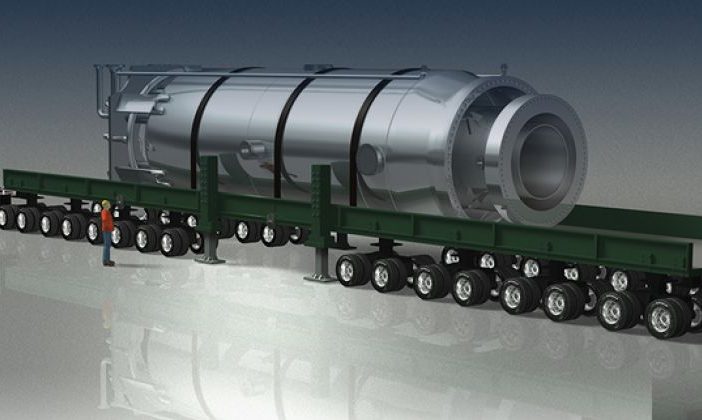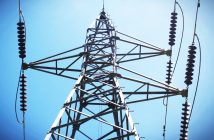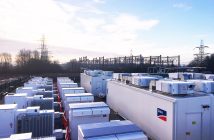Opinion
It was two dramatic nuclear bomb blasts which brought World War II in the Far Eastern Theatre to a close in 1945. The public worldwide instantaneously learnt of the power of nuclear reactions, writes Dr Kelvin Kemm, nuclear physicist.
But then immediately after the war, the focus shifted to developing very small nuclear power packs specifically for use in submarines. During WW II submarines had played a major role in the war at sea, but a huge disadvantage they had was that when submerged they ran on electric motors, powered by batteries. The batteries only gave them power for about one day, so every night subs had to surface to charge batteries, using diesel engines, which vented their exhausts to the atmosphere. On the surface, a submarine was very vulnerable to enemy attack.
So a dream evolved to develop a nuclear power pack for a submarine which would enable it to stay submerged for days at a time, maybe even weeks. This goal was achieved, and famously the American Navy submarine USS Nautilus in 1958 travelled all the way under the Arctic ice cap passing the North Pole on 3 August.
This journey was clearly designed to demonstrate to potential enemies that their subs could move undetected underwater over very long distances. One advantage that a submarine had was all the free water you wanted, to act as a coolant for the nuclear reactor.
The post-war dream of electrical power from nuclear was also being pursued in parallel with the development of land-based nuclear reactors, but they used similar technology to the submarines in which water was a necessary coolant.
Land-based nuclear power stations were built on coastlines near the ocean, or on the edges of large lakes. As the years went by, the ‘children’ and ‘grandchildren’ of these reactors were designed, but all of them needed large bodies of water. The reactors became larger and larger to gain the economic benefit of large power output.
Small modular reactor idea evolves
But some scientists were thinking about also building smaller reactors based on different principles, for rapid, easy deployment. Late in the 20th century a South African group embarked on a project to develop a small modular reactor called the Pebble Bed Modular Reactor (PBMR).
Due to the large size of South Africa, and its well-known shortage of large volumes of water far inland, a design pillar of the PBMR was to not use water for reactor cooling.
As a result, the PBMR was designed to use Helium gas cooling. It was also designed to be small for easy deployment and construction. A single PBMR unit would produce about 5 to 10% of the power output of Koeberg Nuclear Power Station. But this power was still large, in that it is enough to power a large town, or something like a major mining complex, including all underground operations.
The South African PBMR team grew to the impressive size of about 2,000 people, and developed a really fine gas-cooled nuclear reactor system. This reactor is a member of a general class of new nuclear designs now collectively called Small Modular Reactors (SMR).
Over the last few years the idea of small modular reactors has taken off around the world, and a number of countries now have small modular reactors development projects running. However, a number of these SMR developments are effectively the great-grandchildren of the nuclear submarine power pack, in that they still need water for cooling.
Artists’ impressions of the finished power stations still show them on coastlines, or next to lakes. They certainly do benefit from many of the advantages of being small and modular, but they do not address the South African problem of supplying electricity to dry places far inland such as mines.
An example could be the major mining centre of Carltonville where there certainly is no ocean or giant lake but where there is a very large underground mining complex which consumes much more energy than the town itself.
So South Africa’s approach of developing the gas-cooled PBMR is still extremely important for many applications.
African reality
A number of countries are developing systems for small modular reactors. This is clearly in response to the perceived international demand for such systems. In Africa alone, some dozen African countries have already indicated their desire to follow a nuclear power future.
A number of African countries have already established nuclear power agencies and are now well-advanced with their plans. They have realised that the intermittent, unreliable nature of wind and solar power cannot be strategised as a solution to industrial growth.
They are also well aware of the cyclical nature of rainfall patterns in Africa which can lead to five-year droughts, and so then severely impact the output of hydroelectric schemes. Norwegian hydro schemes use very ‘vertical’ cracks in the inner reaches of fjords, as the supply dam for their hydro-power. They effectively have a constant pressure-head due to their height, but also because rainfall, plus ice and snowmelt runoff, are so regular and predictable that there is no fear of dams running dry.
In Africa the feeder dams are more like saucers, large-diameter bodies of water open to the hot African sun leading to fast evaporation, and with no guaranteed ice and snow melt to fill them, as is the case in Norway. It is not uncommon for large African dams to lose water during a drought such that they become less than 25% full. This type of variation in volume is acceptable if the dam is built for water supply, but not for electricity production in which the height of the water determines the pressure on the turbines.
Small modular reactors for African solutions
Africa has to think of African solutions for Africa. European solutions certainly should be looked at for academic input, but should not just be adopted in Africa, because they work in Europe. African planners and political leaders need the courage to believe in their own engineers and developers who have examined home-grown answers.
The PBMR development is a very advanced gas-cooled reactor concept. It was developed to the point where construction could have started ten years ago, but the world financial scene, induced by the 2008 US Subprime-mortgage drama; and also the anti-nuclear sentiments of the romantic views of the wind and solar enthusiasts, put the brakes on the development of the PBMR, and also on worldwide nuclear generally.
Fortunately, the current South African energy minister has revived interest in nuclear power and in the PBMR. He is showing wisdom and foresight, in stark contrast to his predecessor.
During the decade when the PBMR project hibernated, waiting for a new dawn, a privately-funded group of nuclear designers and developers in Pretoria decided to develop a pruned-down version of the PBMR, using private funds. The resulting reactor that was developed still produces about the same power output but incorporates a few significant changes which make it faster and cheaper to construct.
This reactor is the HTML100. It has been intentionally designed to use some major off-the-shelf components to reduce the cost and complexity. It has been intentionally developed to satisfy the African market generally.
Clearly it is in the interests of African countries to work together in developing an SMR network which is beneficial to all, so that expertise, components, fuel and other factors can be exchanged and mutually developed.
Major growth outlook
World electricity consumption doubled over the past 25 to 30 years. There is every reason to believe that it will double again over the coming 25 years. In the case of Africa, that doubling time should be even faster. Currently, the economic growth of many African countries is severely constrained by a lack of electricity for industrial expansion. As soon as a viable source of regular, reliable, affordable electricity is found, then it will unleash a tidal wave of African development.
Networks of small modular reactors such as the HTML100 are the answer. Clearly, comprehensive courage and foresight is what is needed to make this happen.
Dr Kelvin Kemm is a nuclear physicist and is CEO of Stratek Business Strategy Consultants, a project management company based in Pretoria. He carries out business strategy development and project planning in a wide variety of fields for diverse clients
This article was originally published on ESI Africa and is republished with permission with minor editorial changes.
Disclaimer: The articles expressed in this publication and ESI Africa are those of the authors. They do not purport to reflect the opinions or views of Green Building Africa, our staff or our advertisers. The designations employed in this publication and the presentation of material therein do not imply the expression of any opinion whatsoever on the part Green Building Africa concerning the legal status of any country, area or territory or of its authorities.












1 Comment
The original Kemm fantasy – the Pebble Bed Modular Reactor or PBMR – cost R16-billion and we have nothing to show for it but more pretty CAD drawings. The technology itself was a failed rector at Hamm-Uentropp in Gernany which blew up in May 1986 and spewed Cesium-137 all over the place.
The sales pitch was that it would be cheaper ONLY if more than ten units were bought off plan.
Well, nobody bought any and the deal was kyboshed.
former Arnscor boffin Kelvin Kemm was supposed to be a beneficiary through Silver Protea Technology.